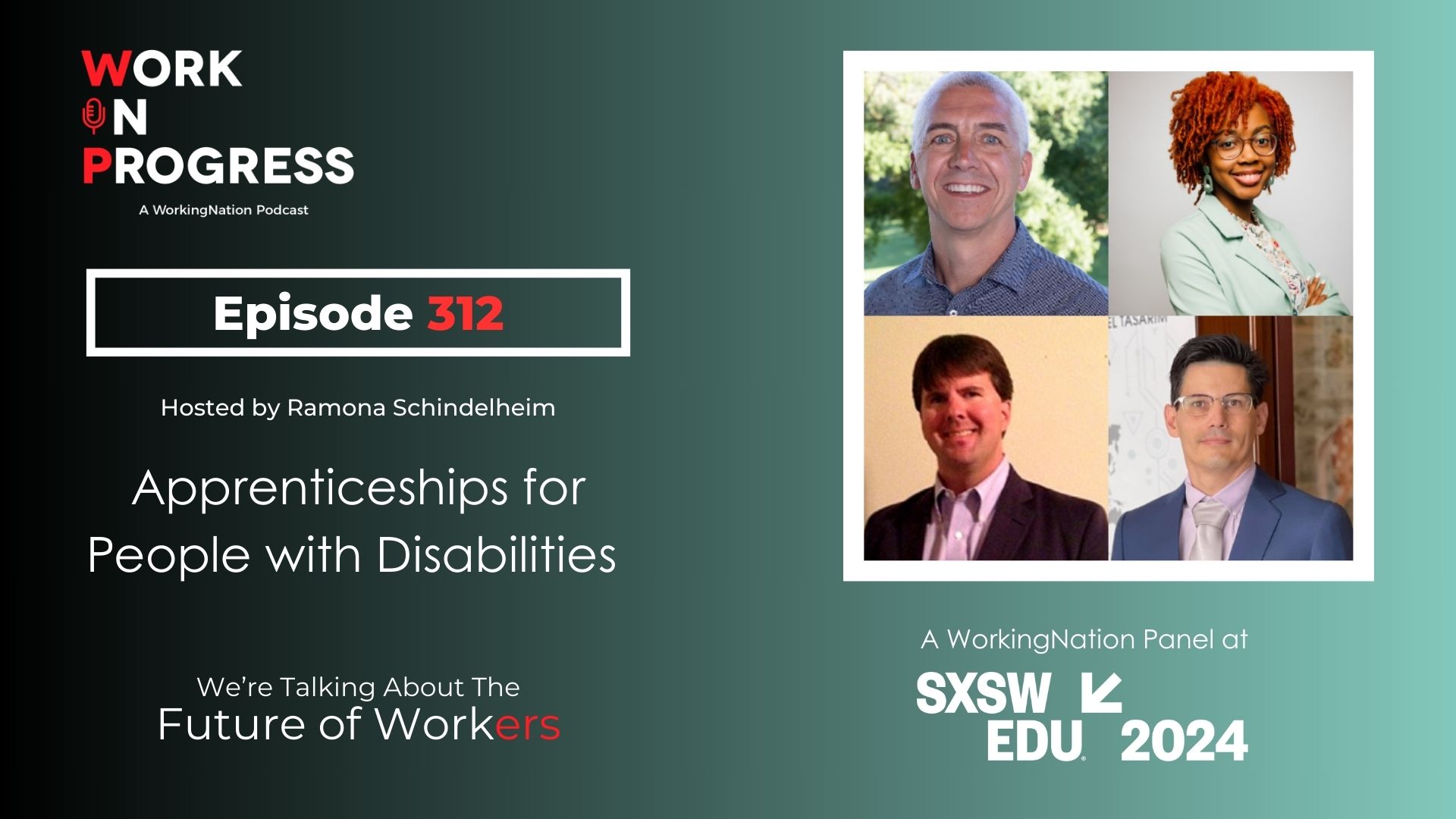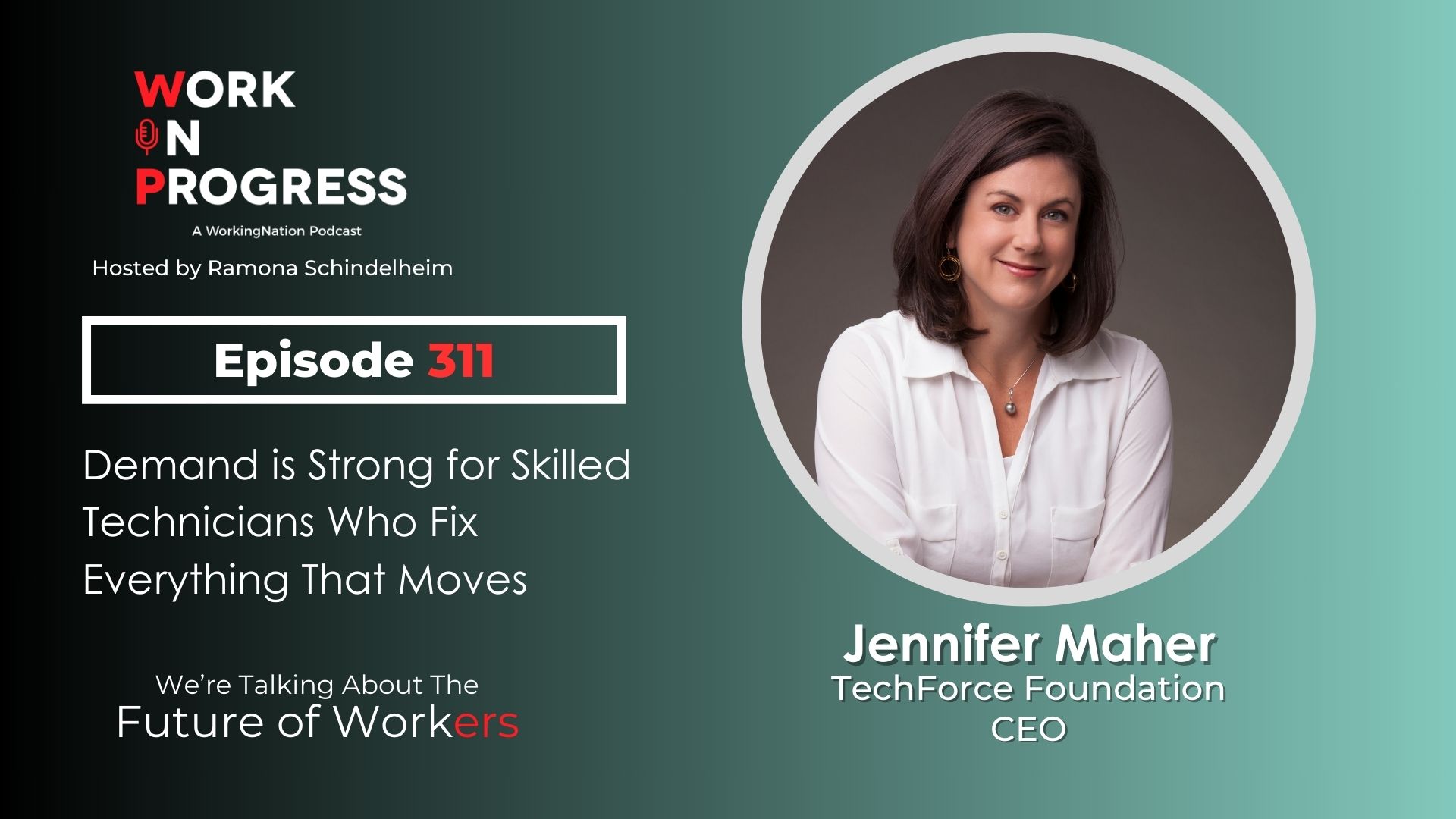WorkingNation consultant and workforce reporter Ramona Schindelheim is the featured writer for October. Schindelheim interviewed CEOs from four of America’s leading companies to get their take on closing the skills gap in the United States.
This week, Schindelheim interviewed CEO Mike Petters of Huntington Ingalls Industries about how his company is engaging in skills training to create the next generation of shipbuilders.
Huntington Ingalls Industries (HII) takes great pride in its 137-year history of building America’s military fleet. The company takes just as much pride in how it has trained thousands of employees, giving them the on-the-job experience and the skills they need to be a part of the HII legacy.
“Generations of shipbuilders in Virginia and Mississippi have proven that it’s possible to get a good-paying job without a college degree.” These are the words of Mike Petters, CEO of Huntington Ingalls (HII). With 37,000 employees nationwide, HII is the largest industrial employer in those two states. Every U.S. Navy aircraft carrier, the world’s largest warship, is built at one of their shipyards.

Huntington Ingalls is also one of two builders for American nuclear submarines and the builder-of-record for Aegis guided missile destroyers and large-deck amphibious ships. All told, the company has built nearly 70 percent of the nation’s fleet of warships. The work is demanding and specialized. Petters tells me that this is where HII’s Apprentice Schools in Newport News, Virginia, and Ingalls, Mississippi, come in.
RELATED STORY: BorgWarner President & CEO James Verrier on reinventing the auto industry worker
“A lot of discussion around the skills gap tends to be more college-oriented. The vast majority of people that we will hire over the next five years will not require a college degree,” explains Petters. But they will have to be highly-skilled at the jobs HII needs.
While the company employs more than 5,000 engineers and designers, most of its employees hold titles like pipefitter, welder, or machinist, all specialty trades and all critical jobs. The Apprentice School program “has been a tried and true method,” according to Petters, “taking highly-motivated people who really want to go do important things and giving them the skills they need to be successful at the complex craft of shipbuilding.”
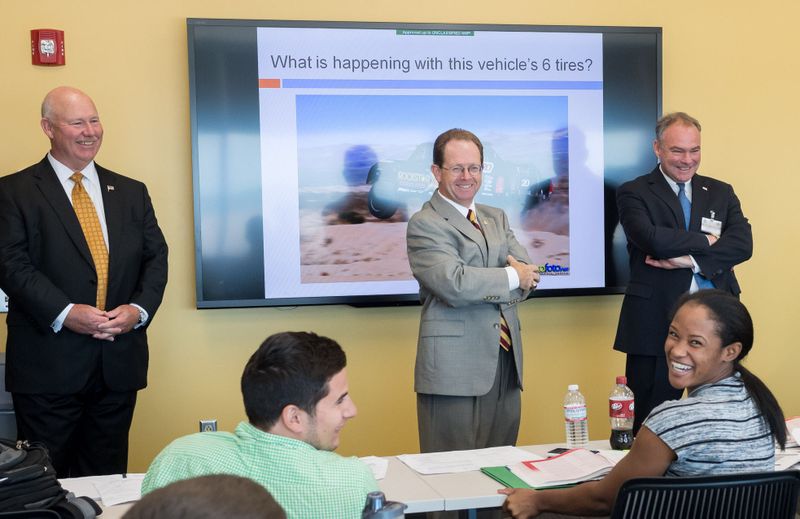
Getting a place in one of the Apprentice Schools is highly-competitive. “It is harder to get into the school than into Harvard, Petters says, “They turn down more people, on a percentage basis than any other school in the country.”
Since its first class in 1919, more than 10,000 apprentices have gone through the program in Newport News. Four thousand more have graduated from the school in Ingalls, which opened in 1952. Both apprentice programs include on-the-job training at one of the shipyards.
“They are actually in school, learning their craft, as our employees. We’re paying them to go do that,” Petters says, “We put them down on the ship, under instruction, with the craft instructor, to do their craft as part of the production program.”
RELATED STORY: Mike Petters for Industry Week – Engage in the process upstream for workforce development
For the company, this approach ensures that HII will have a pipeline of employees with skills to match the evolving nature of shipbuilding. This includes a pipeline of engineers who understand the complex nature of building a military warship and the security involved.
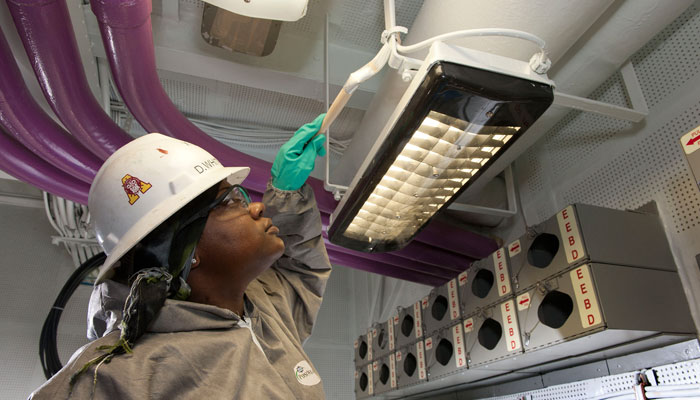
“We certainly are a high-tech company and we need to hire engineers,” Petters says, “but we find ourselves working in a space where maybe the skill set that we are trying to hire doesn’t exactly match up with what is being taught in college engineering programs.”
Petters tells me the company takes a very proactive approach: “If we want to improve the quality of the applicant for the engineering program, we’ll give engineering schools insight into what we’re looking for and even let them use some of our software. We’ll try to align their teaching and curriculum to something that we can use. We have a lot of opportunity, by choice, to affect the efficiency and effectiveness of that pipeline. That’s one of those keys to our success, that we do engage, that we do put the effort in. We make the investment, so we get the product we want out of the pipeline.”
The work involved in building a military warship — like most manufacturing — is constantly changing, according to Petters.
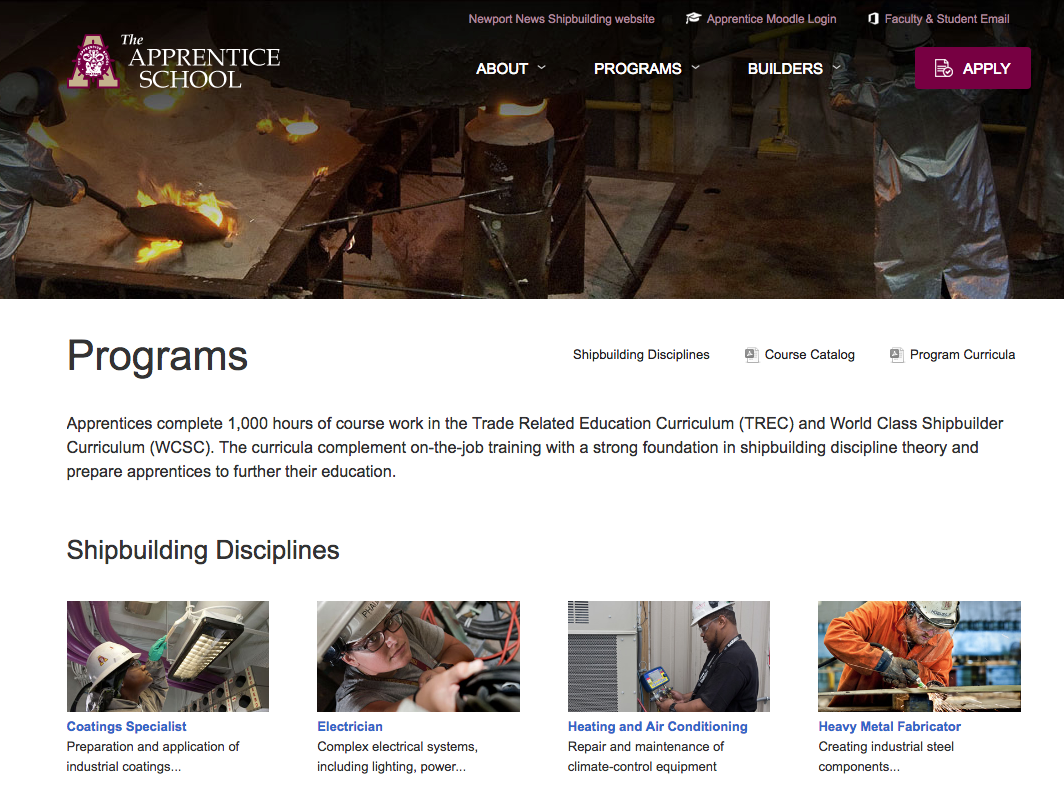
“If you think about the challenges of the workforce of the future, I believe the successful worker of the future is going to be someone who loves to learn. You’re going to know how to do something when you’re 17. You’re going to have to relearn it at 22. And every four or five years, you’re going to be relearning it again. Think about how fast things are changing now and they are going to be changing even faster going forward,” Petters says.
RELATED STORY: America’s top CEOs weigh in on closing the skills gap
Petters says helping others develop a love of learning will change the American workforce. Huntington Ingalls is investing in the future by investing in the children of its current employees.
“We offer our employees the opportunity to apply for a scholarship for their kids to go to preschool. We don’t really expect that all these kids that go to preschool are going to end up as employees of HII, but the fact of the matter is that if our community is stronger and our kids develop a love of learning, it will raise all the boats in the harbor, so to speak,” Petters says.
In the past two years, HII has sent more than 70 children to preschool, many of whom may not have been able to go otherwise. Petters says it’s already paying off, “I meet kids who are a whole lot smarter than I was at their age.”
Closing the skills gap is important to Huntington Ingalls on many levels. The company and Petters believe it is a matter of national security.
“The value and strength of our national security are going to be based on the human capital that we have to draw from,” Petters says, “If we don’t have people who know how to design, build or drive business forward, our security will be at risk. If we don’t have an economy that is strong enough and vibrant enough to support that, our nation will be at risk. This is a lot more than making families happy, this is about the future of this country.”
Businesses talk about how they have millions of unfilled jobs just waiting for the right person with the right skills. According to Petters, businesses need to engage in the process early.
“We encourage people to engage in the process early in the pipeline. I see companies that kind of wait at the end of the pipeline and are not happy with what they get and they complain about it. My answer is if you are not happy with what you’re getting out of the workforce pipeline, go engage in the pipeline and make sure it’s supporting what you need,” says Petters. “You can talk about it all day, but if you don’t do something about it, it’s all talk.”
Join the Conversation: What do you think about HII’s programs? Tell us on our Facebook page.
Coming Next Week: Dow Chemical CEO Andrew Liveris on how his company is meeting the challenge of closing the skills gap.
Connect with Ramona via Twitter or her website. You can read her previous articles for WorkingNation at this link.



